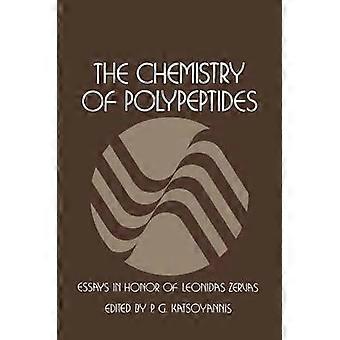Description
1 The Scientific Work of Leonidas Zervas. - 2 Active Esters and the Strategy of Peptide Synthesis. - I. Introduction. - II. The Development of Active Esters. - III. Active Esters in Stepwise Syntheses. - IV. Active Esters in Solid-Phase Peptide Synthesis. - V. Conclusions. - References. - 3 The Facilitation of Peptide Synthesis by the Use of Picolyl Esters. - I. Introduction : The Functional Handle. - II. 4-Picolyl Esters of ?-Amino Acids. - III. Use of 4-Picolyl Esters for the Facilitation of Peptide Synthesis. - IV. Conclusions from Recent Experience. - References. - 4 On Cysteine and Cystine Peptides. - I. Introduction. - II. S-Protection of Cysteine During Peptide Synthesis: Transformation of S-Protected Cysteine Peptides to Cystine Peptides. - III. Unsymmetrical Cystine Peptides. - References. - 5 The Tosyl and Related Protecting Groups in Amino Acid and Peptide Chemistry. - I. Introduction. - II. Introduction of Tosyl Groups. - III. General Properties of Tosylamino Acids. - IV. Removal of Tosyl and Related Protecting Groups. - V. Tosylamino Groups in Carboxyl Protection and Carboxyl Activation. - VI. Tosyl Derivatives in Amino Acid Chemistry. - VII. Tosyl Protecting Groups in Peptide Synthesis. - VIII. Analytical Uses of Arenesulfonyl Derivatives. - IX. Sulfonyl Derivatives Other Than Tosyl. - X. Conclusion. - References. - 6 Tactics for Minimal Protection in Peptide Synthesis. - I. The Concept of the Minimal Use of Protecting Groups. - II. Indispensable Protection. - III. Conclusion. - References. - 7 Peptide Synthesis and the Specificity of Proteinases. - 8 Structural Studies of Naturally Occurring Cyclic Polypeptides at Rockefeller University. - 9 The Conformations of Cyclopeptides in Solution. - I. Introduction. - II. General Principles of Composite Physicochemical Study of the SolutionConformation of Cyclopeptides. - III. Cyclohexapeptides. - IV. Valinomycin. - V. Enniatins. - VI. Gramicidin S. - VII. Antamanide. - VIII. Conclusion. - References. - 10 Survey of the Synthetic Work in the Field of the Bacterial Cell Wall Peptides. - I. Introduction. - II. Stereospecific Preparation of Meso-diaminopimelic Acid Derivatives. - III. Synthesis of Meso-diaminopimelic Acid-Containing Peptide Subunits of the Escherichia coli Cell Wall Peptidoglycan. - IV. Synthesis of ?-Branched Isoglutaminyl and Lysyl Peptides of the Staphylococcus aureus Cell Wall Peptidoglycan. - V. Synthesis of Linear and ?-Branched Glutamyl and Lysyl Peptides of the Micrococcus lysodeikticus Cell Wall Peptidoglycan. - VI. Conclusions. - References. - 11 Intracellular Proteolysis and Its Demonstration with Synthetic and Natural Peptides and Proteins as Substrates. - I. Introduction. - II. The Concept of Proteolysis. - III. Synthetic Substrates for Protease Determinations. - IV. Autoproteolysis of Organs. - V. Qualitative and Quantitative Differentiation of Autoproteolysis by Use of Synthetic Substrates. - VI. Autoproteolysis of the Cell Components and Proteolytic Interactions Between Them. - VII. Proteolytic Enzyme Activity of Lysosomes Toward the Cell's Own Cytosol Proteins in Comparison to Foreign Proteins and Synthetic Peptides. - VIII. Significance of Enzymatic Reductive Cleavage of Disulfide Bridges for Intracellular Proteolysis. - IX. Conclusions. - References. - 12 Synthesis of Human ACTH and Its Biologically Active Fragments. - I. Introduction. - II. Synthesis of Human ACTH. - III. Synthesis of Sequence Homologs of Corticotropins. - IV. Biological Activity of the Synthetic Peptide Fragments. - V. Conclusions. - References. - 13 Synthesis of Pure Polypeptide Hormones with Full Biological Activity. - I. Introduction. - II. Glucagon. - III. [15-Leucine]-Human Gastrin I. - IV. Secretin. - V. Concluding Remarks. - References. - 14 Neurohypophyseal Hormones : Old and New Slants on the Relationship of Chemical Structure to Biological Activity. - 15 Use of Polymeric Reagents in the Synthesis of Linear and Cyclic Peptides. - I. Introduction. - II. Polymeric Reagents and Their Potential Use in Organic Synthesis. - III. Polymeric Reagents in Peptide Synthesis. - IV. Use of Polymeric Active Esters of Blocked Amino Acids in Peptide Synthesis. - V. Polymer Condensing Agents. - VI. Cyclic Peptides. - VII. Concluding Remarks. - References. - 16 Solid-Phase Peptide Synthesis. - I. Introduction. - II. The Solid-Phase Idea. - III. Summary and Conclusions. - References. - 17 Monitoring in Solid-Phase Peptide Synthesis. - I. Introduction. - II. Monitoring of the Coupling Reaction. - III. Monitoring of the Deprotection Step. - IV. Discussion. - References. - 18 Need for Solid-Phase Thinking in Solid-Phase Synthesis. - I. Introduction. - II. The Nonsolid State of the Solid Phase. - III. The Solid-Phase Peptide. - IV. Solid-Phase Analysis. - V. Conclusions. - References. Language: English
-
Fruugo ID:
339521547-744793443
-
ISBN:
9781461345732
Delivery & Returns
Dispatched within 4 days
Shipping from United Kingdom.
We do our best to ensure that the products that you order are delivered to you in full and according to your specifications. However, should you receive an incomplete order, or items different from the ones you ordered, or there is some other reason why you are not satisfied with the order, you may return the order, or any products included in the order, and receive a full refund for the items. View full return policy

